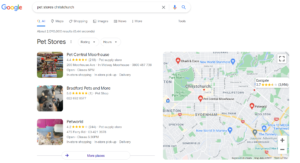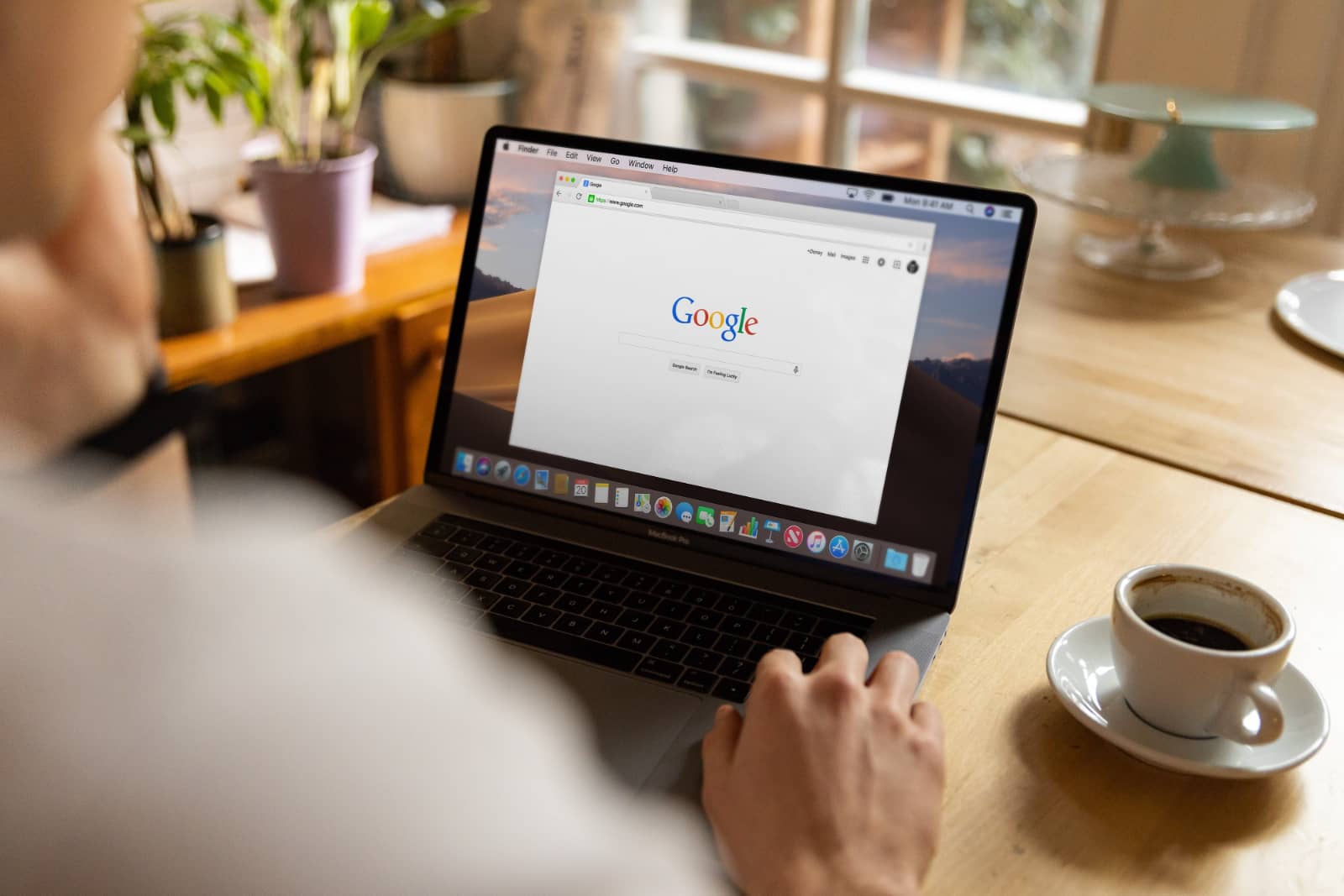If you are a small business operator, freelancer or contractor in New Zealand, local search engine optimisation should be an central part of your digital marketing strategy. It’s a simple, impactful way to ensure you’re reaching customers near you. Not sure how to get started?
With so many smaller companies targeting their local area, local search engine optimisation (SEO) is often the easiest to improve. This guide will help you get to grips with the basics of local SEO for small business.
What is local SEO?
Local SEO is a search engine optimization strategy that helps your business become more visible in local search results on Google. Any business that has a physical location or serves a geographic area can benefit from local SEO.
If you search Google for any important keywords related to your business and a map with 3 listings appears underneath it (also known as a map pack), then local SEO can help you grow your business.

There are 3 key elements to Local SEO: Proximity, Prominence and Relevance. You want to optimise your site for all these things.
- To show Proximity, you need to be clear about the location of your business and/or the area your service or supply to.
- Prominence is about how much Google trusts your business. This is affected by a huge number of factors, from the way your website is built and set up, to how many websites you have linking back to your site.
- Relevance is all about the search term itself – is your business relevant to the query that’s been searched?
Six ways to boost your local SEO strategy
Let’s move on to the most important part – how to boost your local SEO strategy and improve your local search ranking. There are plenty of aspects to this, so we will focus on some of the most fundamental.
1. Claim and optimize your GMB listing
Google My Business (GMB) is essentially the most critical part of your local SEO strategy. This tool from Google allows you to create free business listings. It’s one of the top factors that Google will consider when ranking businesses in organic local search and map pack results. Without an optimised GMB profile you simply won’t appear in the local map listings.
To start, go to the claim or create your listing. You will need to provide the following details for your GMB listing:
- Your full and correct business name
- Your physical store/office address
- Your exact location on a map
- Your business category
- Your phone number and website (if applicable)
Once your listing goes live, you’ll need to verify it usually through a phone call or via postcard. Here’s how to optimize Google My Business after verification:
- Upload photos of your business. This could be photos of the inside your store/office or even around the premises.
- Provide your business hours.
- Provide your service area/s if you are an online only store or target multiple regions without a physical store in each.
- Provide additional categories and services that may be relevant to your business.
- Provide additional phone numbers if available.
You can further optimize your GMB profile by sharing business updates and fresh content regularly. There are several platforms that will help you post directly to your GMB profile. Make the most of these features to update your customers with what’s new and share details about upcoming events. This helps you connect with your customers on a deeper level in addition to boosting your visibility in local searches.
2. Keep mobile in mind
With smartphones now being a part of our daily lives, it’s only natural that a lot of people are using their phones to search for local information and businesses.
Uberall commissioned a study, which found that 82% of respondents had used their mobile devices to conduct a “near me” search. As such it’s crucial that you cater to these searchers by optimizing your website for mobile screens. Create a mobile-friendly website so mobile visitors have no trouble navigating it or finding the information they need.
Don’t forget to add click-to-call buttons on your site and on your GMB listing. This could make a huge difference because 60% of mobile users have contacted a business directly from search results.
3. Collect plenty of customer reviews
Review signals play a critical role in your local search and map pack ranking. So having plenty of authentic reviews, particularly positive ones, can help to boost your visibility in local search in addition to enhancing your reputation. That means you need to work towards collecting more authentic customer reviews for your business.
Maintain your focus on sites where Google would expect businesses to have reviews. In addition to your website and your GMB listing, Google will also value reviews from consumer directories and social media. That means focus on collecting reviews on Facebook, Yelp, Yellow.co.nz, Foursquare, etc depending on which ones are relevant to your business.
4. Focus on local link building
Link signals such as linking domain authority and quantity are among the top factors that influence your ranking in local search and map pack results. Just like with regular SEO, local SEO also requires link building to boost your link profile. However, the linking domains should be more relevant to your target location.
Target acquiring links from authority websites in your target region. This could be anything from licensing bureaus and trade associations to the Chamber of Commerce or even .edu sites.
Partnerships, scholarships, guest posting could be excellent ways to gain valuable backlinks from local sites.
5. Ensure NAP/citation consistency
In local search engine optimization, citations are mentions of your business’s name, address, and phone number (commonly referred to as NAP) on a website that isn’t your own.
Google’s local algorithm looks at your NAP information as a signal of relevancy and proof that you’re a legitimate local business and located at the address listed in your Google My Business profile.
This means your information should be on major citation websites; think Bing Maps, Apple Maps, Yelp and Facebook. Focus on directories that have higher domain authority than on smaller listing directories.
Most importantly, make sure your business NAP is consistent across all platforms and websites. Look out for any misspellings, address and phone number discrepancies, duplicate listings and resolve them to improve your local SEO.
6. Make the most of social listening
Social listening may have primarily served as a source for marketing insights, but it has many benefits beyond that. It could also help fuel your local SEO strategy if you know which insights to look out for and how to make the most of them.
Use social listening to find out what people in your target location are saying – whether it’s about your business or your niche general. You could even use it to collect information about audience interests, priorities and so on. Then make the most of these insights to find out how you can make changes to your strategy or even to your products and services.
For instance, you might have noticed people complaining about the lack of outdoor seating at your café. Maybe it’s time to introduce it to appeal to an even bigger audience. You can then optimize your GMB by sharing updates about your new seating arrangement, for instance.
Or maybe you’ve noticed people wishing your hair salon also provided manicure services. You could expand your service offering and share this update on your GMB profile.
Your social listening efforts could also help you understand what types of local content your target audience might be looking for. You could then build a robust local content strategy to fit those needs.
Ready to get local?
These are some of the essentials on how to take your local SEO efforts to the next level. Keep in mind that your local SEO efforts can span across various locations, and you can apply these ideas in your SEO for multiple locations if you’re targeting more than one area.




